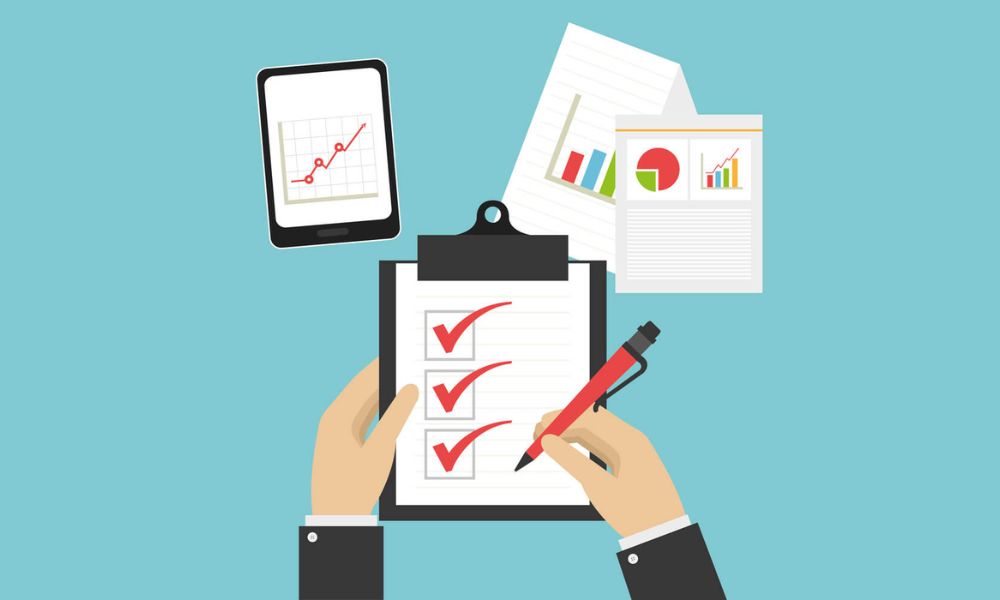
A checklist simplifies task tracking. It recognizes finished tasks. Prevent impulsive trading and mistakes with a trading checklist.
For example, check your list and cross off ten daily tasks. You'll feel accomplished and motivated. Checklists compensate for memory and attention limitations, reducing human errors.
A checklist helps you remember all of the procedures at work and makes sure that everything is done the same way and on time.
Checklists help you organize and keep track of tasks, avoid mistakes, keep things the same, be more efficient and productive, and finish a process.
They aid in repetitive tasks. In larger projects, a checklist simplifies task coordination. It also monitors and completes your tasks.
In business management, it's important to delegate and finish tasks. Using a checklist makes it easier for your employees to follow through and gets you to your goal faster.
Trading checklists assist traders in staying disciplined, following the plan, and gaining confidence. A trading checklist contains questions that traders must answer before trading.
A trading checklist is not a trading plan. The trading plan covers the big picture, including your market and analytical approach. The trading checklist examines each trade and its prerequisites.
Before trading, ask yourself:
Experienced traders know that following a strong trend can lead to higher-probability trades. Trending markets are known to rescue traders from disastrous entries.
As shown below, even if a trader launched a short trade after the trend was fully established, the trend would continue to deliver more pips to the downside than the upside.
Traders must consider whether "trend trading" is part of their trading plan and whether the market is showing indicators of a strong trend.
Ranging markets trade between support and resistance. Asia trades in ranges. Range traders can benefit from oscillating indicators (RSI, CCI, Stochastic).
Knowing price levels is crucial because price behavior respects them for several reasons. Traders don't want to be short once the price drops to support and bounces back.
The price declines after approaching a major resistance level. Trend traders seek sustained breaks of these levels to indicate a market trend.
Range traders expect prices to oscillate between support and resistance for a long time.
Indicators help traders verify high-probability trades. One or two indicators will support the trading plan and strategy.
Avoid confusing analysis by adding several indicators to a chart. Keep the analysis clear and concise for quick viewing.
The risk-to-reward ratio is the number of pips traders risk to reach their aim. Traders with a positive risk-to-reward ratio were nearly three times more likely to earn, according to our Traits of Successful Traders study of over 30 million live trades.
A 1:2 ratio means a trader risks half of what they could gain if the trade works. This is shown below.
Traders must ask. "Sure thing" traders often blow up their accounts by leveraging to the max. Limiting leverage on all trades to 10 to one or less can help.
Set stops on all trades and limit risk to 5% of the account balance. "How much capital should I use?" before trading.
Market news can ruin the "perfect" trade. Traders can plan for economic releases like NFP, CPI, PMI, and GDP. Terrorism, natural disasters, and systemic financial market failure.
It will help traders stick to their trading plan, make consistent trades, and avoid making risky or impulsive trades. It is nearly impossible to predict.
Plan using our economic calendar, which emphasizes significant economic announcements from top trading nations.
Without a trading plan, all of this is useless. Deviating from the trading plan will produce varied results and upset the trading process. Follow the trading plan and only trade after the checklist is completed.
These are some of the rules that, in our opinion, should be thought about before doing any kind of business deal. But having a checklist isn't enough to make sure that every transaction will make money.
Traders, on the other hand, will benefit from sticking to the trading plan, trading consistently, and avoiding trades that are driven by impulse or recklessness.
|
HOT TOPICS |
|
 |
|
 |
|
 |